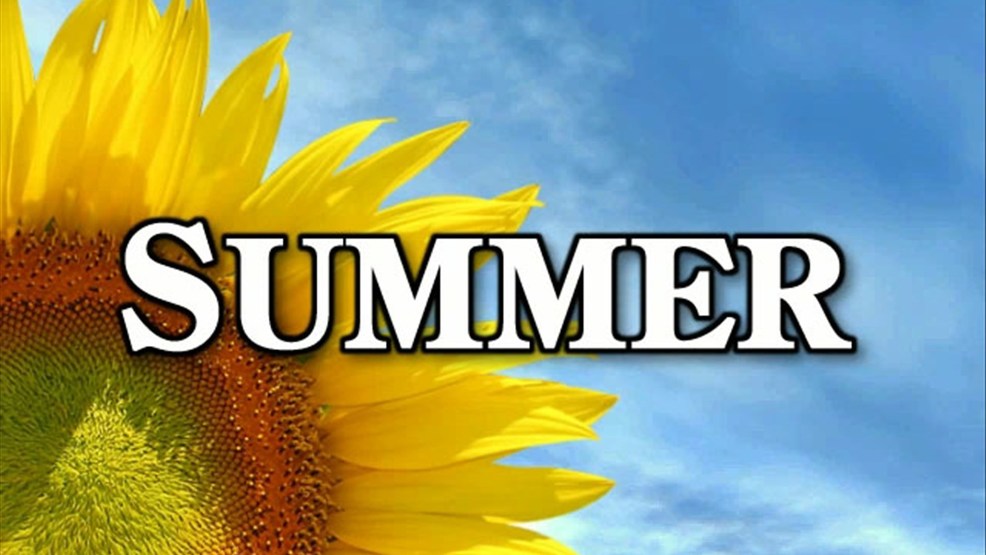

The June Solstice is often referred to as the first day of summer, and yet celebrations across the Northern Hemisphere at this time of year carry the name Midsummer, which is pretty confusing. Summer Solstice: midsummer or the beginning of summer? This means that for meteorologists it’s been summer since the beginning of June… The length of the meteorological seasons are more consistent than the astronomical ones, so that we can observe, forecast and compare season statistics reliably from year to year. Meteorologists split the year into four quarters, each made up of three months, based on the annual temperature cycle. Meteorological dates mark the start and end of seasons for statistical purposes. This is where the meteorological seasons come in. The elliptical shape of the Earth’s orbit causes the lengths of the astronomical seasons to change and this mean it is difficult to compare climatological statistics consistently for a particular season. This means the longest and shortest days vary from one year to the next. It's the tilt of the Earth in relation to the Sun that defines when the solstice falls.īecause the Earth actually takes 365.24 days to travel around the Sun we add an extra day every fourth year, we call this a Leap Year. “In astronomy, summer starts with the Summer Solstice and lasts until the Autumn Equinox (or when the hours of daylight and night are equal)," which in 2020 will happen on 22 September. When we are tilted away from the Sun, there are fewer hours of daylight and longer hours of night, which is winter.” “When all of us in the Northern Hemisphere are tilted towards the Sun, there are more hours of daylight, which happens in summer. The only reason why the Earth has seasons – spring, summer, autumn and winter – is because of the tilt of the Earth.” “The Earth has a tilt, meaning its North and South poles aren’t perfectly lined up with the Sun. As the Earth moves round the Sun, the hours of daylight change, and this is how we get seasons. The Earth's axis is tilted as it travels around the Sun, so some parts of the Earth receive more sunlight each day than others. Astronomical seasons are precisely defined.” “In astronomy, the June Solstice (which is defined by a point in the Earth’s orbit around the Sun) signifies the beginning of summer in the Northern Hemisphere (and the beginning of winter in the Southern Hemisphere). While some have theorized that Stonehenge was the location of prehistoric summer solstice rituals, there’s little archaeological evidence that it was used this way.Tom Kerss and Emily Drabek-Maunder, from The Royal Observatory, Greenwich, explain what an astronomical season is all about. The site is aligned with the direction of the sunrise on the summer solstice.

The orientation of some archaeological structures are thought to reflect ancient observations of the summer solstice.įrom the view of the Sphinx, the sun sets squarely between the Great Pyramids of Khufu and Khafre on Egypt’s Giza plateau on the summer solstice.Īrcheologists have long debated the purpose and uses of Stonehenge, a Neolithic megalith monument in the south of England. Other summer solstice traditions hold that the ashes from a Midsummer bonfire can protect one from misfortune or that the ashes-when spread across one’s garden-will bring a bountiful harvest. John’s Wort, because of its association with St. One of the most powerful of these plants was known as ‘chase devil.’ Today it’s called St. During Vestalia, married women could enter the temple of Vesta and leave offerings to the goddess in exchange for blessings for their families. In the days leading up to the summer solstice, the ancient Romans celebrated Vestalia, a religious festival in honor of Vesta, goddess of the hearth.
#First day of summer code
The Greeks’ strict social code was temporarily turned on its head during Kronia, with slaves participating in the merriment as equals or even being served by their masters. Kronia, a festival celebrating Cronus, the god of agriculture, was also held around this time. The summer solstice also marked the one-month countdown to the opening of the Olympic games. Solstice in Ancient CulturesĪccording to some ancient Greek calendars, the summer solstice marked the start of the New Year. John’s Day to commemorate the birth of John the Baptist. Wiccans and other Neopagan groups call it Litha, while some Christian churches recognize the summer solstice as St. In Northern Europe, it’s often referred to as Midsummer. Different cultures and religious traditions have different names for the summer solstice.


 0 kommentar(er)
0 kommentar(er)
